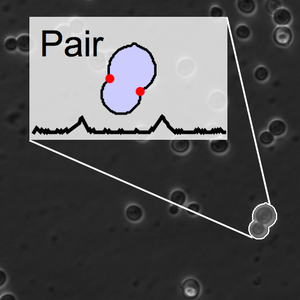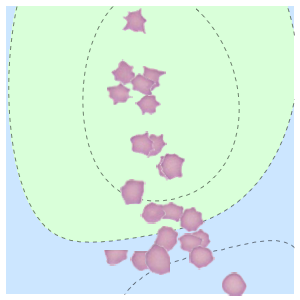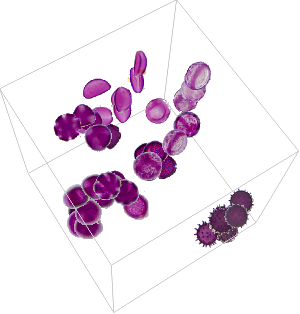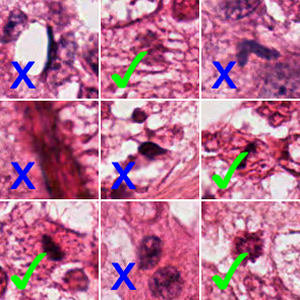Classify Pollen Using Neural Nets
This example demonstrates classification of pollen samples from tulips, hibiscus, daffodil, poppy, lavender and ivy using image feature extraction and neural networks. A dataset containing pollen name, sample image of the flower, size of the pollen and a few sample pollen images taken under the microscope is used.
Display the first record of the dataset.
The challenge here is to train a neural net on a small number of data samples. Notice that this dataset has only 43 sample files.
You can cope by transfer learning and data augmentation.
The following command augments images by rotation and reflection.
Generate a randomized training set with 344 samples through augmentation.
You can utilize transfer learning by building a feature extractor based on a neural network that has been trained on image features in general.
Convert all pollen images to 157-dimensional, semantic feature vectors.
Display the neural network features via a three-dimensional  -distributed stochastic neighbor embedding (t-SNE).
-distributed stochastic neighbor embedding (t-SNE).
Build a small, two-layer neural network to act as a pollen classifier.
Training the neural net.
Apply the neural net to a new set of pollen images.


























